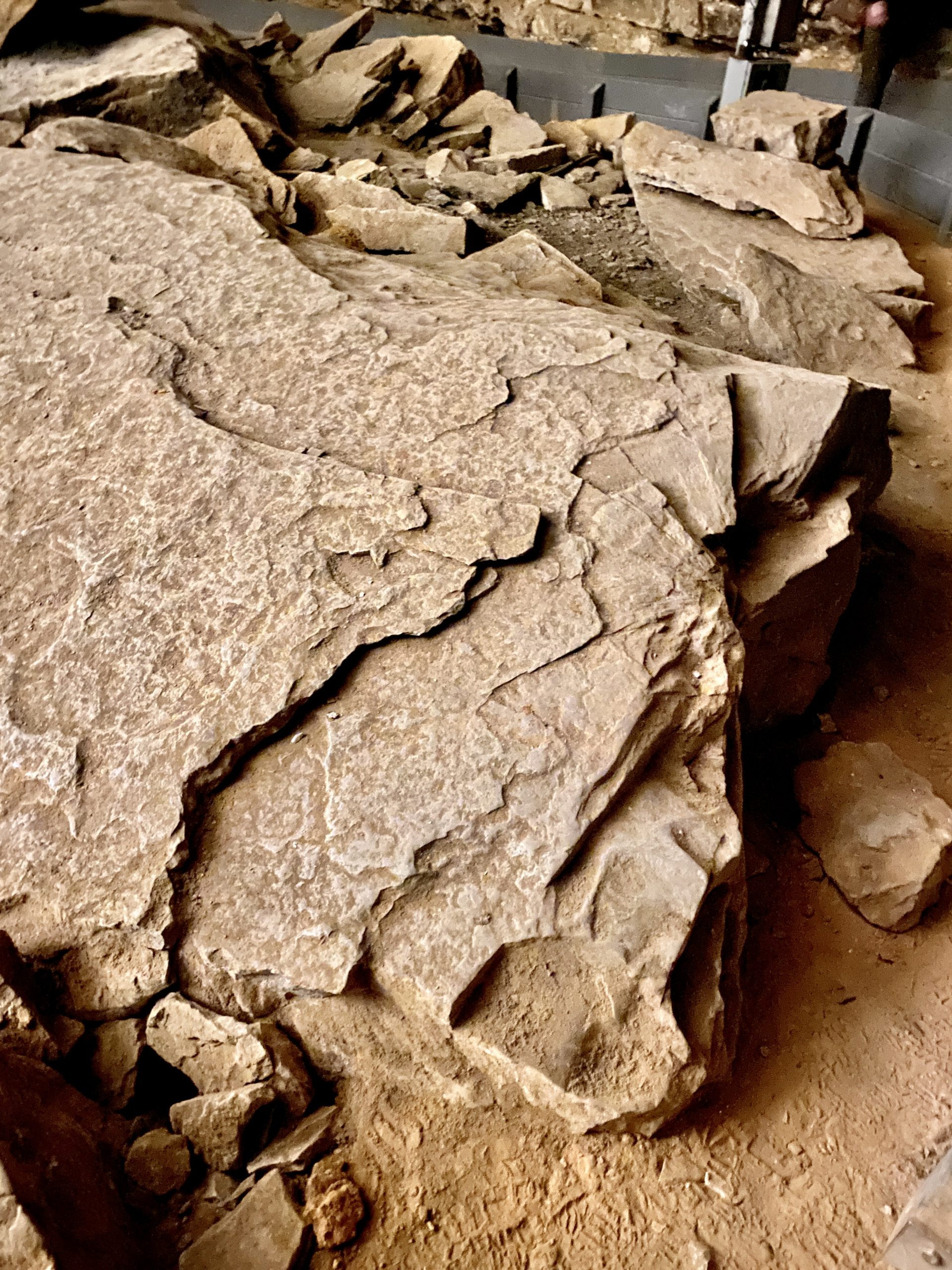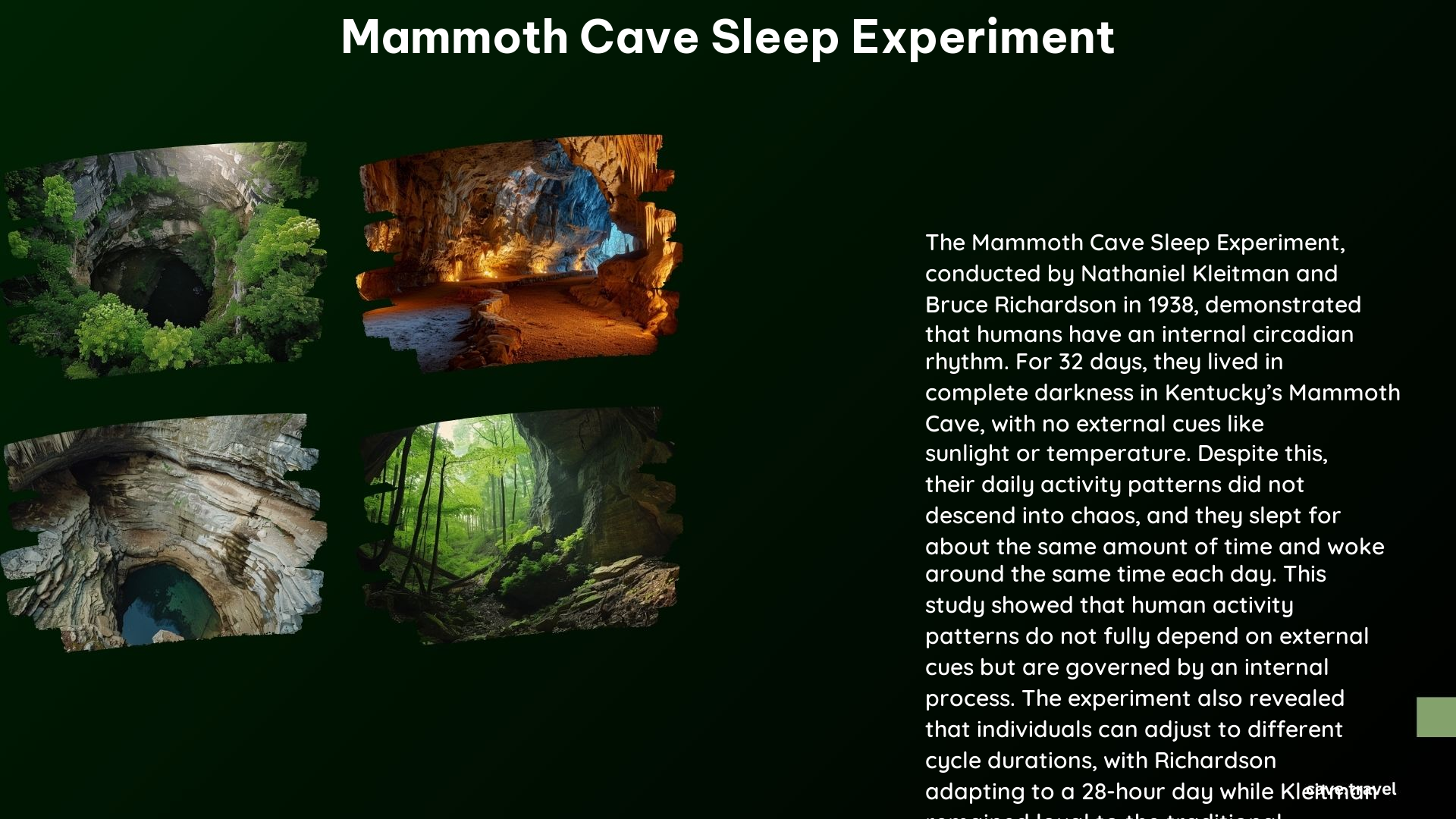The Mammoth Cave Sleep Experiment, conducted by Nathaniel Kleitman and Bruce Richardson in 1938, was a groundbreaking study that explored the human circadian rhythm. This experiment delved into the fascinating question of whether the human body could adapt to a different sleep-wake cycle, even in the absence of external cues such as light and temperature.
The Experiment Design

Kleitman and Richardson, two pioneering sleep researchers, embarked on a 32-day journey into the depths of Mammoth Cave, Kentucky. During this time, they followed a strict schedule, sleeping for 9 hours, working for 10 hours, and enjoying 9 hours of leisure. To monitor their body’s responses, they used oral thermometers to measure their body temperature every two hours and kept meticulous records of their sleep patterns.
The only external contact they had was with the hotel staff, who delivered their meals at specific times based on their adjusted sleep-wake cycles. This isolation from the outside world allowed the researchers to focus solely on the internal mechanisms that govern the human circadian rhythm.
Adaptation to a 28-Hour Day

The results of the experiment were fascinating. Richardson, who was 25 years old at the time, adapted remarkably well to the 28-hour day. He slept soundly during the prescribed periods and his body temperature cycle stretched to match the new rhythm. On the other hand, Kleitman, who was 43 years old, had a more challenging time adapting. His body temperature cycle remained closer to the traditional 24-hour rhythm.
This observation suggested that the ability to adapt to a different circadian rhythm may be influenced by age. Younger individuals, like Richardson, may have an easier time adjusting to a new sleep-wake cycle, while older individuals, like Kleitman, may find it more challenging.
Key Findings
The Mammoth Cave Sleep Experiment made several crucial discoveries:
-
Internal Circadian Rhythm: The study demonstrated that the human body has an internal circadian rhythm that is not entirely dependent on external cues. Even in the absence of light and temperature fluctuations, the body maintained a roughly 24-hour temperature cycle.
-
Adaptability of Sleep-Wake Patterns: Kleitman concluded that the patterns of sleeping and waking are a “habit” that can be actively shifted, although the degree of adaptation may depend on factors such as age.
-
Implications for Health and Well-being: The study has had significant implications for our understanding of the human body’s internal clock and its impact on health and well-being. It has contributed to the field of sleep research and our understanding of the importance of maintaining a healthy circadian rhythm.
Significance and Legacy
The Mammoth Cave Sleep Experiment was a groundbreaking moment in the history of sleep research. It helped to popularize the field and demonstrated the crucial role of internal circadian rhythms in governing human activity patterns. The study’s findings have had far-reaching implications, influencing our understanding of the human body’s internal clock and its impact on various aspects of our lives, from sleep quality to overall health and well-being.
Conclusion
The Mammoth Cave Sleep Experiment remains a fascinating and influential study in the annals of sleep research. By isolating participants from external cues and observing their body’s adaptations to a different sleep-wake cycle, Kleitman and Richardson made invaluable contributions to our understanding of the human circadian rhythm. This experiment continues to inspire and guide ongoing research in the field, as we strive to uncover the secrets of the body’s internal clock and its profound impact on our lives.
References:
- https://www.lib.uchicago.edu/collex/exhibits/discovering-beauty/mammoth-cave/
- https://link.springer.com/article/10.1007/s40656-023-00571-w
- https://www.uchicagomedicine.org/en/forefront/biological-sciences-articles/2022/may/studying-the-circadian-rhythm-of-bacteria
- https://storymaps.arcgis.com/stories/643b988969884874ac7a309f9b5c1890
- https://time.com/archive/6759335/science-cave-men/
